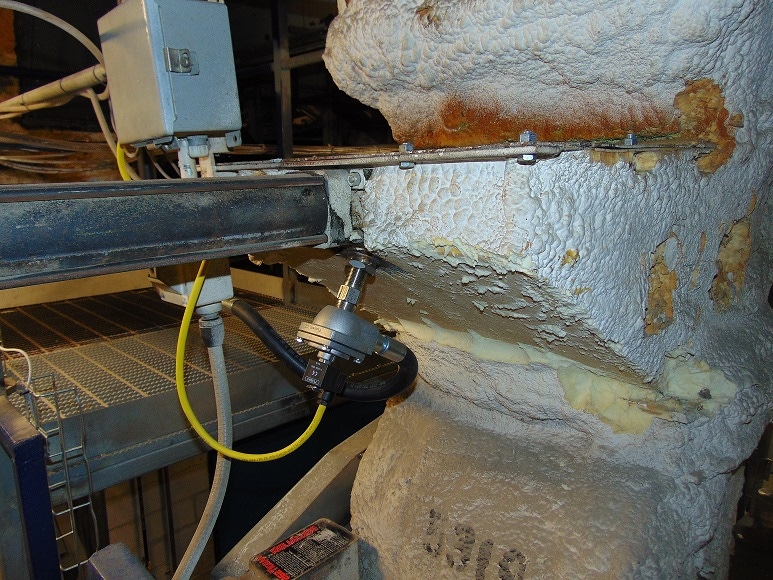June 25, 2019

For pet food manufacturers, avoiding cross-contamination is central to their production process. Bulk material flow problems such as ratholing, bridging, and other material blockages decrease flow through a process system which can contribute to possible cross-contamination.
Additionally, these problems quickly become expensive. Decreased output from vessels, increased downtime for vessel clean-outs, and increased processing time raise the bottom line. Several material flow activation equipment options are available, yet many companies resort to hammering containers to stimulate stuck material because the activation system they chose is not effective for their specific application. Hammering causes damage and wear to the vessel and may also lead to operator safety issues such as shoulder and back problems from continual swinging of the heavy hammers.
Elmira Pet Products, the largest Canadian private-label dry pet food manufacturer, produces well-known brands for mass merchandise, grocery, and the pet specialty channels, as well as unique diets for distribution to niche markets. In 2018, they researched a new material activation system to replace an ineffective system. Their research led them to the AirSweep Material Activation System.
Bridging and Blockages in Dry Mix Bins
In 2014, Elmira Pet Products added two dry mix staging bins to existing bins. The two new bins immediately had issues with product flow due to bridging in the bottom of the bins, particularly above the slide gate. The feed blend consisted of meat and vegetable meal, ground grains and minerals, with a moisture content of approximately 7%. Vibrators and pneumatic hammers were employed to activate the material flow and eliminate the bridging. Neither solution was effective. Operators resorted to hammering the bins with sledgehammers to dislodge the material. Consequently, downtime increased, bins were being damaged from the hammering, and operators had to climb two stories of stairs and ladders to get the product moving again creating a safety risk.
In 2018, Riley Dahmer, processing engineering specialist for Elmira Pet, contacted Control Concepts Inc. to inquire about the AirSweep system to replace the vibrators and pneumatic hammers. Designed to break friction to lift and sweep stalled material back into the flow stream, the AirSweep system delivers powerful bursts of compressed air or inert gas in a 360° radius, immediately resealing to prevent material feedback. Each AirSweep nozzle can activate up to 8 ft of material without causing wear or damage to vessel walls.
Based on drawings provided by Dahmer, Eric Esselstyn, sales manager at Control Concepts, designed AirSweep placement drawings for each bin, paying particular attention to the area above the discharge flange. The recommended system consisted of three carbon steel 1 ½ in. VA-12 AirSweeps per dry-mix bin, strategically placed to stimulate flow in areas that were backed up with material. A programmable sequence controller triggered 0.25-second air pulses every 20 seconds to activate the material up to 8-ft diam at 100 psi for a first-in, first out controlled flow. Four months after installation, some hang-ups were noticed in the bins. The AirSweep air pulse parameters are being tweaked to resolve these issues.
“We are waiting for more feedback, but the situation is still much better than it was last year,” said Dahmer. “We are in the process of converting our other dry mix bins to AirSweeps as well.”
Elmira Pet Products purchased additional VA-12 units for another bank of bins that hold mix for extruders. Due to the slope of the bins, the material bridging was setting off nuisance alarms triggered by low level sensors 10 in. above discharge flange. AirSweep units will be placed above the blockage area, as well as higher on the sloped vessel wall to ensure materials continue to flow successfully out of the bins.
Preventing Cross-Contamination
After an assessment of their systems revealed kibble fines were being left behind in a sloped transition approximately 4 in. above an airlock, Elmira Pet Products again chose to install an AirSweep system.
“As a manufacturer of dry pet food, eliminating kibble cross-contamination is one of our top priorities,” said Dahmer.
A ¾-in. VA-06 304 stainless steel AirSweep unit with 180° mounting coupling was installed in each vessel to dislodge the kibble fines out of a transition section of the bin between a slide gate and vane feeder during their cleanout cycles. With kibble fines still hanging in corners, Esselstyn worked with Dahmer and Rate Technologies, an AirSweep distributor in Canada, to troubleshoot the system. Esselstyn recommended changing the 180° mount to the standard mount for the wider 360° air blast radius, changing the pulse duration from three seconds to 0.25 seconds, checking the airline size and pressure, and ensuring the VA-06 was set to the proper depth in the bin.
“Initial results have been positive, and the AirSweeps have been easily integrated into our automated cleanouts,” said Dahmer.
Elmira Pet Products’ installation of AirSweep units to replace the vibrators and pneumatic hammers is keeping pet food ingredients flowing through their process systems effectively and safely.
For more information on Control Concepts Inc. (Putnam, CT), visit www.controlconceptsusa.com.
For related articles, news, and equipment reviews, visit our Storage Equipment Zone
Click here for Storage Equipment Manufacturers
You May Also Like


